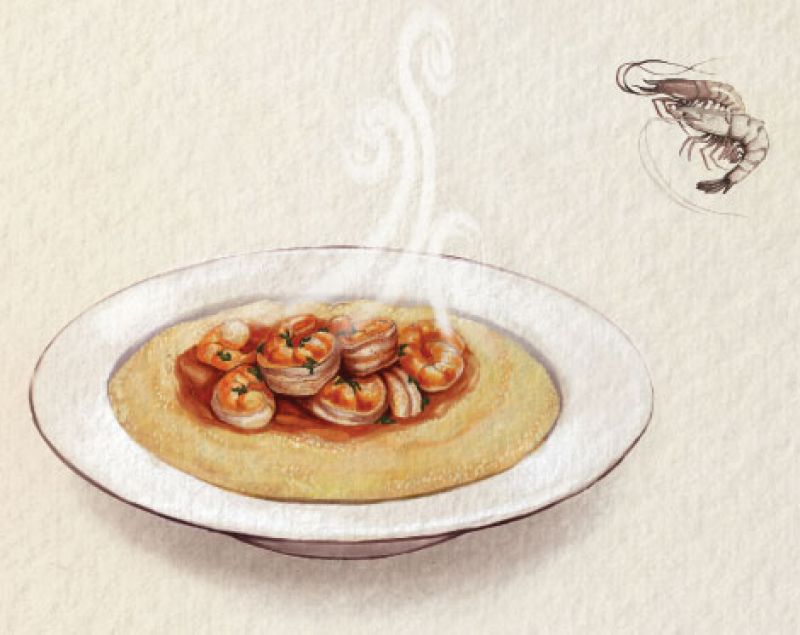
Instant Gritification
A Charleston colonist wrote in the 1680s: “The Indians in Carolina parch the ripe Corn, then pound it to a Powder, putting it in a Leathern Bag: When they use it, they take a little quantity of the Powder in the Palms of their Hands, mixing it with the Water, and sup it off; with this they will travel several days.” Voila, the original instant grits!
Shrimp Boats are Comin’
Shrimp are harvested commercially by trawlers, which generally work in the ocean within three or four miles of the beach. Individuals shrimp recreationally using cast nets and drop nets. There are three seasons: roe shrimp in May or June, brown shrimp from approximately June to August (though sometimes as late as October), and white shrimp from August to December (or even January).
“Swimpee, Swimpee—raw, raw Swimps!”
Gullah street vendors used to sing those words as they sold fresh shrimp each morning from carts they rolled through downtown streets.
South Carolina has two important shrimp species, brown shrimp (Farfantepenaeus aztecus) and white shrimp (Litopenaeus setiferus). A third species, the pink shrimp (Farfantepenaeus duorarum), is less common.
Going national
In The Lee Bros. Charleston Kitchen, authors Matt Lee and Ted Lee posit that shrimp and grits “achieved national stature” after Craig Claiborne wrote a 1985 The New York Times article about visiting Crook’s Corner restaurant in Chapel Hill, North Carolina, where chef/owner Bill Neal had the dish on the menu.
State Fare
In 1976, South Carolina declared grits its official food, noting that grist mills were once common throughout the state and that “grits has been a part of the life of every South Carolinian of whatever race, background, gender, and income.”
Goodness Gravy
While the original shrimp and grits recipes (called “receipts” in Charleston) involved a sauce of melted butter, grits are now also served with gravy, usually made from sausage or country ham (that’s red-eye gravy). Today, there are as many different recipes for the dish as there are chefs and kitchens.
True Grits
Hominy is dried corn kernels that have been steeped and cooked in a lime solution that removes the hull and germ. Hominy can then be milled into grits. The word “hominy” comes from the Virginia Indian word “rokahamen,” for “parched corn.” “Grits” may be a corruption of “grist,” the act of grinding grain. Charlestonians call them “hominy grits.”